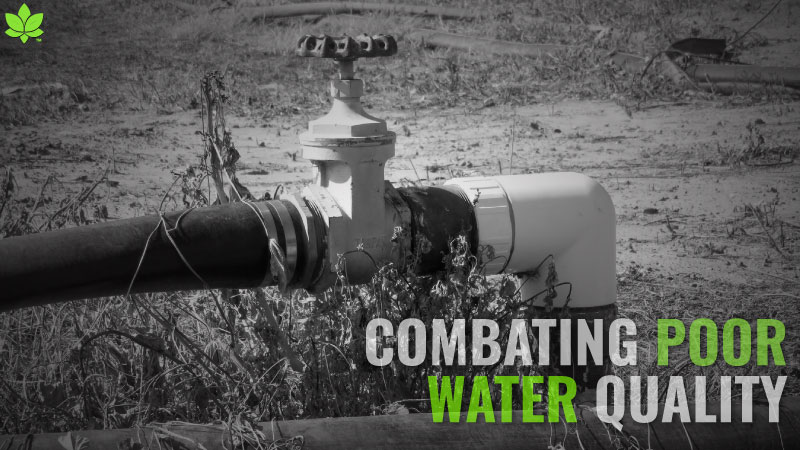Is Plant Virus Detection Tech Becoming Too Good?

These cherry leaves are showing effects of prune dwarf virus (infected right, healthy left). The challenge to produce clean plants requires constant vigilance. Photo by Bill Shane
An interesting clash between technology and clean plant certification has been brewing with real implications for the tree fruit industry. This revolves around recent improvements in technology to detect foreign DNA and RNA genetic materials in plants. These technologies, called next generation sequencing (NGS) or high-throughput sequencing (HTS), allow the detection of all virus and virus-like organisms in plants, whether they are pathogens, non-pathogens, or something halfway between.
Viruses and virus-like organisms are a special problem for the commercial grower. Unlike bacterial and fungal pathogens, orchard trees that have been infected by viruses cannot be cured. The only way to remove a virus from an orchard or a block of nursery trees is by destroying the infected host plants and replanting with clean trees in a clean site. Over time, an initially clean block will accumulate viruses, but the hope is that the grower has made a reasonable profit from the planting before that happens.
When Is a Plant Clean?
The concept of a “clean” plant is a tricky one. For many years, virus-tested certification programs depended on inspections for virus symptoms and indexing (budding onto indicator plants that readily show virus symptoms). More recently, certification programs utilize ELISA (enzyme-linked immunosorbent assays) antibody tests for specific pathogens, and later PCR (tests for pathogen-specific DNA and RNA), in addition to indexing.
Tree nurseries don’t generally state that their nursery trees are virus-free, but rather that they are certified virus-indexed. The certification is specifically for virus pathogens deemed important by state and national regulatory agencies. New tests are added as new pathogens arise or are discovered.

Indicator plant chip-budded with tissue from test plant shows symptoms of virus infection.
Photo by Bill Shane
Key to the production of clean tree fruit plants by U.S. nurseries are the clean plant centers at Prosser, WA, and Davis, CA, both part of the National Clean Plant Network. For a fee, these centers will receive plant material, test for viruses and virus-like organisms, and if contaminated, use heat treatment and other techniques to obtain virus-free material for propagation. The process generally takes two to five years and costs thousands of dollars per plant. Nurseries use the tested/cleaned plant material to establish budwood blocks for propagating nursery stock for sale. State regulatory agencies provide oversight on nursery production practices to help ensure procedures are done correctly.
Next-Generation Sequencing Dilemma
With the advent of NGS, the deep scan of plant material has revealed the presence of many virus and virus-like organisms not detected by older technology. Many of these have not yet shown to be significant pathogens. A good example is Cherry Virus A (CVA). CVA is commonly found in cherries, peaches, and nectarines, but has not been shown to definitively cause symptoms. The nursery and regulatory industries are currently determining if CVA-infected plant material requires heat treatment to be considered clean.
Similar issues will arise as the use of NGS and similar technologies increases, replacing older more-expensive, labor-intensive, space-consuming plant indexing, PCR, and ELISA methodologies. The new technology will reveal the presence of many viruses, some of them benign.
As our ability to detect virus and virus-like organisms in tree fruit and other plants increases, the concepts of clean plants and disease prevention becomes murky. Recent work has indicated that viruses may at times have beneficial roles in plants, such as increasing tolerance to dry conditions, and increasing pest resistance. Many of these viruses have had long-term relationships with their plant hosts, including being incorporated into the plant genome. We must be vigilant to keep our plants and especially our planting stock free of harmful pathogens, but also be careful that our work to produce clean plants is based on sound science.










